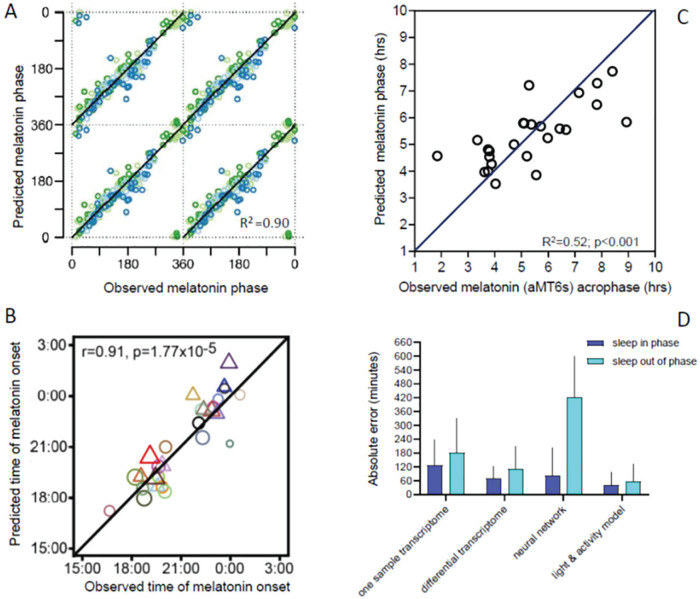Figure 4.
Examples of predictors of circadian melatonin phase and impact of sleeping “out of phase” on accuracy of biomarker prediction. (A) Prediction of plasma melatonin phase from 2 samples taken 12 h apart across the circadian cycle during wakefulness (green symbols), nocturnal sleep (light blue symbols), and misplaced sleep (dark blue circles). From Laing et al. (2017). (B) Prediction of salivary melatonin phase from one sample taken in the afternoon during wakefulness from extreme morning and evening types living on their habitual sleep-wake schedule. Men, triangles; women, circles. The size of the circles indicates the age of the participants. From Wittenbrink et al. (2018). (C) Prediction of urinary 6 sulfatoxy melatonin phase from recordings of activity, light exposure, and a mathematical model for the effects of light in participants living on a nocturnal schedule. From Stone et al. (2019a). (D) Absolute error and its standard deviation of various biomarkers when tested on participants sleeping during the night (in phase) or during the day (out of phase) in either the laboratory or in a shift-work situation. In all cases, the biomarker-predicted phase was compared with a gold standard phase marker (plasma melatonin for the transcriptome predictors; Laing et al., 2017) and urinary 6-sulfatoxy melatonin for the neural network (Stone et al., 2019b) and light model (Stone et al., 2019a). In all cases, accuracy was worse for the out-of-phase condition. Color version of the figure is available online.

